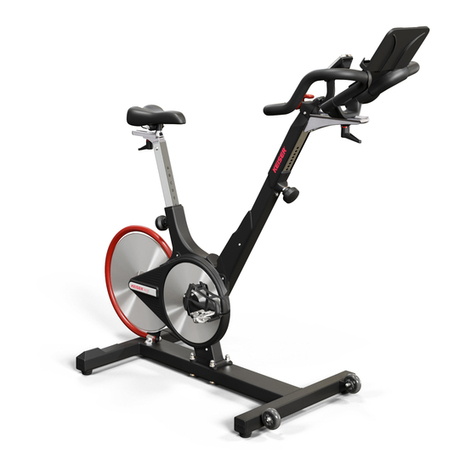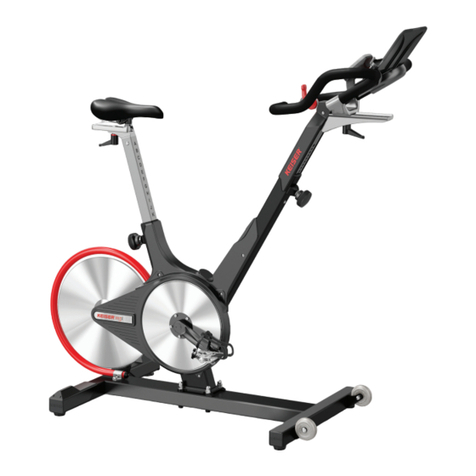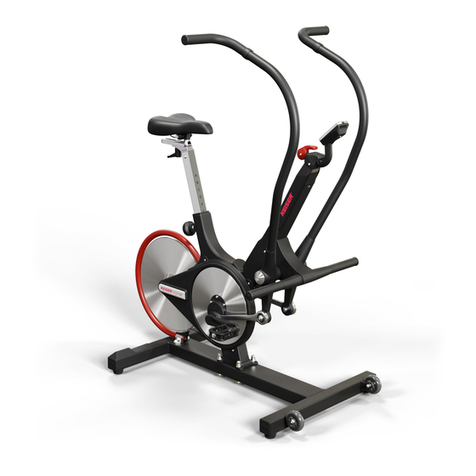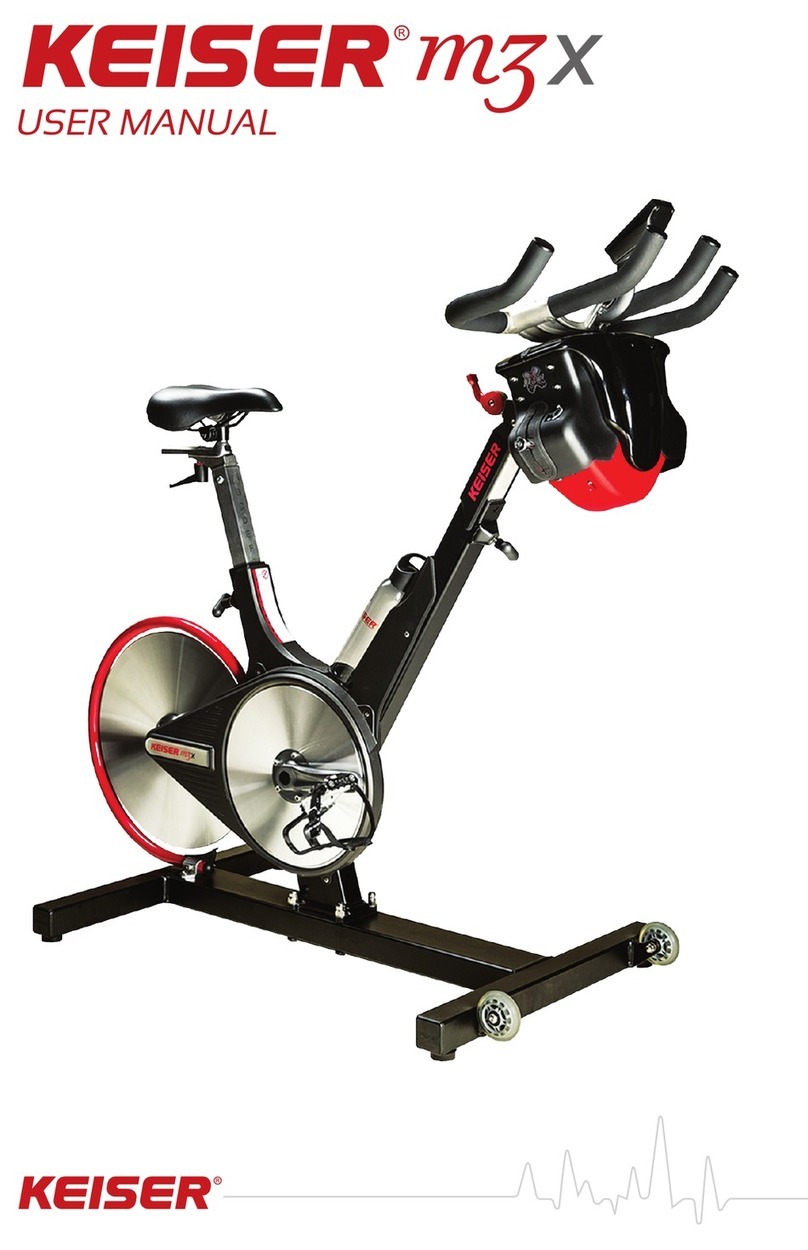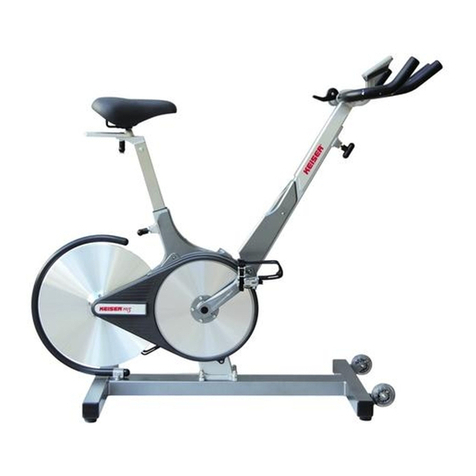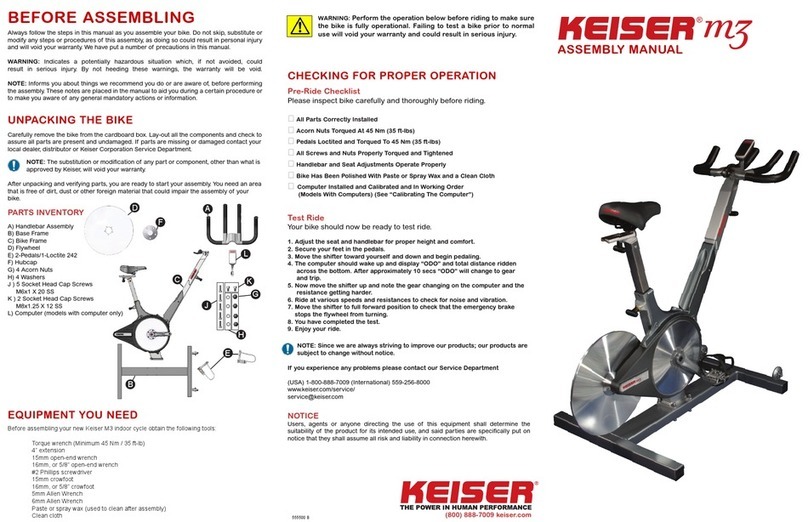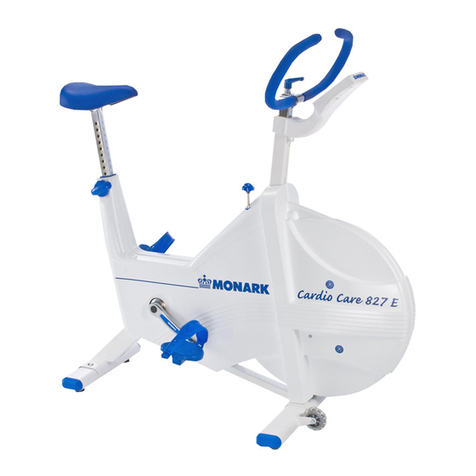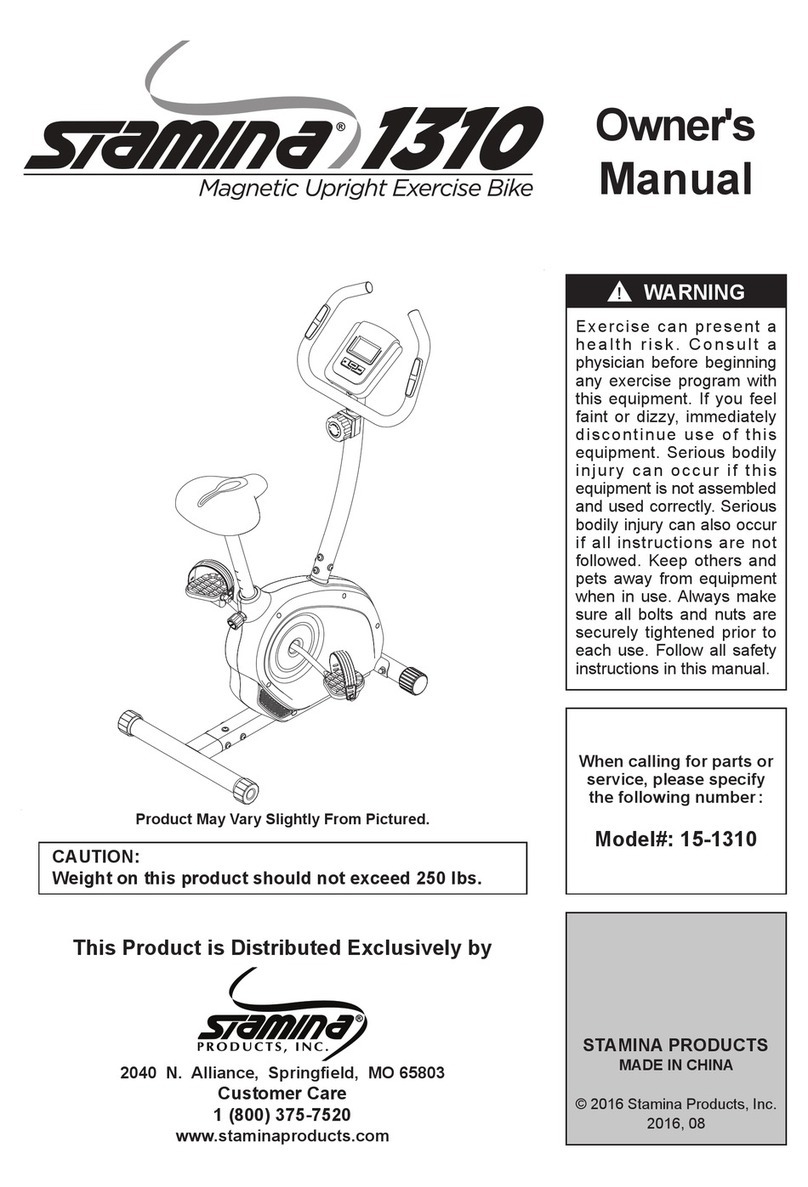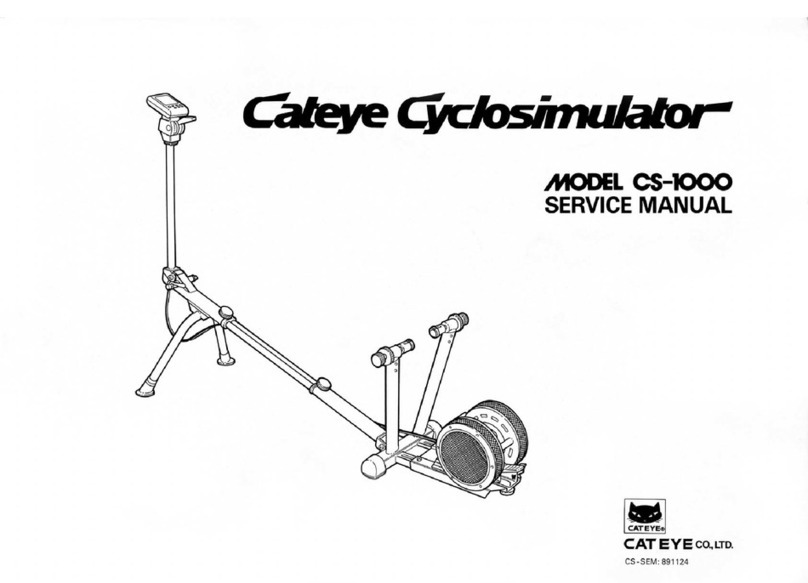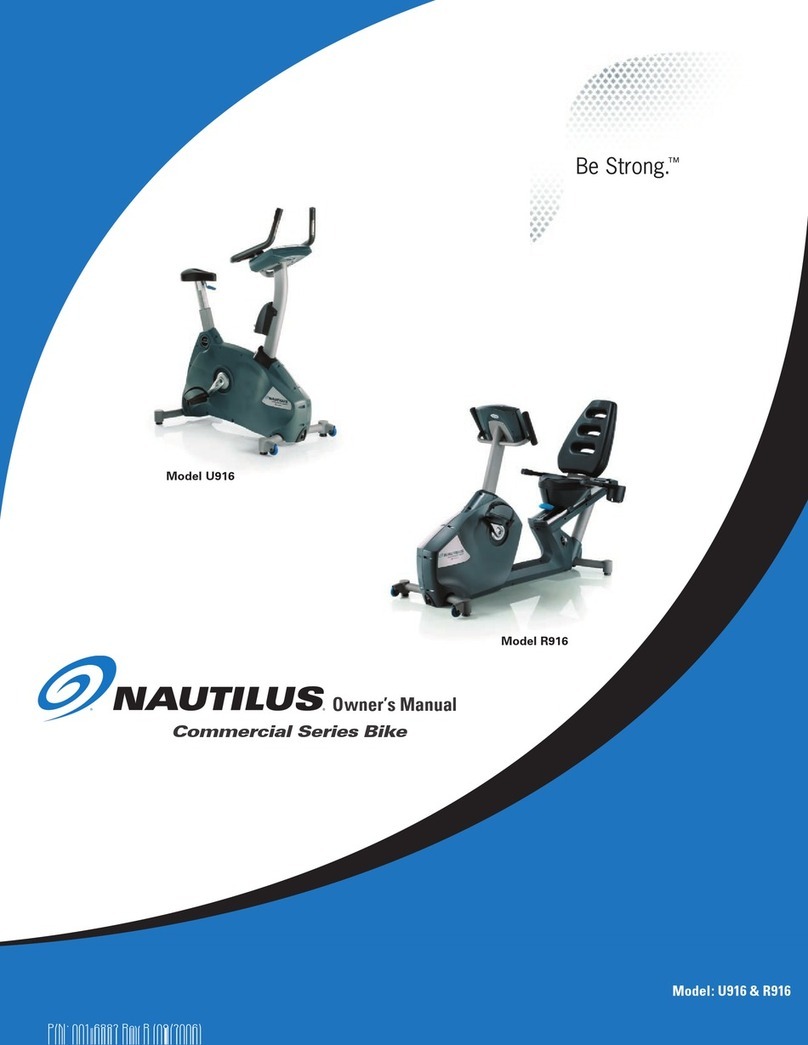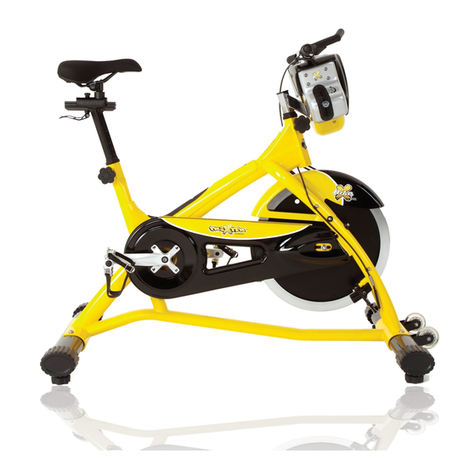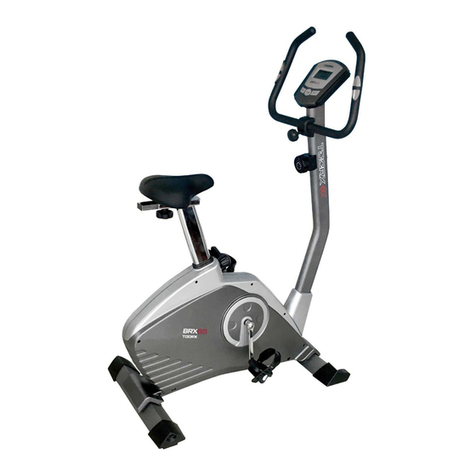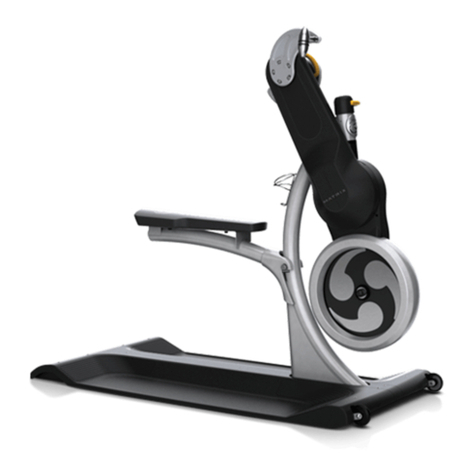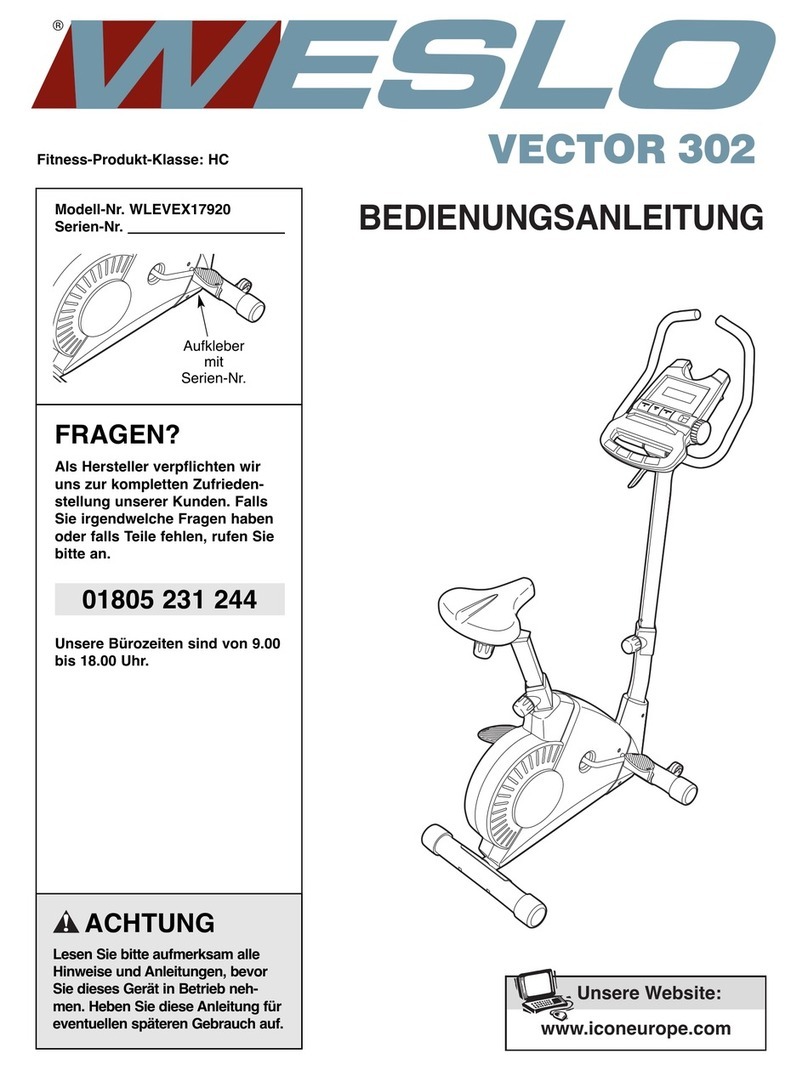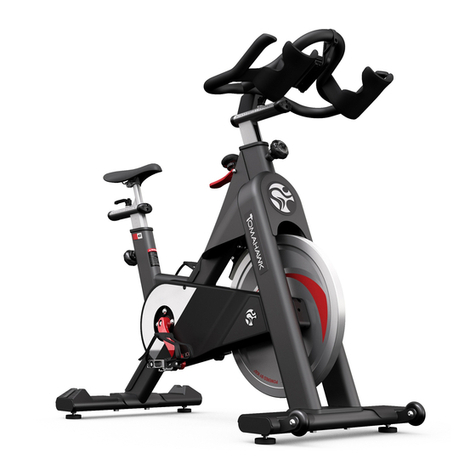
M3 INDOOR GROUP CYCLE 04
Itisthesoleresponsibilityofthepurchaserof KeiserCorporation
equipment to instruct all individuals, whether they are the
end user or supervising personnel, on proper usage of the
equipment. Keiser Corporation recommends that all users of
its equipment be informed of the following information prior
to use.
1. Read these instructions. Keep these instructions.
2. Heed all warnings. Follow all instructions.
3. Use the Keiser M3 Indoor Group Cycle (herein referred
to as “bike”) for itsintended purpose as describedin this
manual. Do no use attachments/accessories that have
not been recommended by the manufacturer.
4. Maximum user weightlimit: 300 lbs(136 kg). User height
range: 58–84 inches (1,473–2,134 mm).
5. Consult your physician before beginning any exercise
program.
6. Heart rate monitoring systems may be inaccurate. Over
exercising may result in serious injury or death. If you
feel faint, stop exercising immediately and consult your
physician.
7. The bike is intended for use in training areas of
organizations where access and control is specically
regulated by a person responsible for determining the
suitability of use and maintenance.
8. Wear proper shoes. Dress shoes, sandals, slippers, or
bare feet are not suitable for use on the bike. Quality
athletic shoes are recommended for proper support
and comfort. Do not wear clothing that might catch on
any moving parts. Tie long hair back.
9. Distractions, such aswatching television, reading, using
a computer device, or talking on the telephone while
using the bike affect the ability of the user to safely
exercise on the bike. Pay attention to and focus on your
exercise while using the bike.
10. Routinely checkand payspecial attentiontocomponents
most susceptible to wear. Refer to the “Preventative
MaintenanceSchedule” (page21) forfurther instruction.
11. Immediately replacedamaged, worn,or brokenpartsand
do not use the bike until all repairs have been completed
and tested by a Keiser-certied technician.
12. Only use replacement parts recommended by Keiser
Corporation. Attempting to repair or replace any
damaged, worn, or broken parts on your own is not
recommended. A Keiser certied technician should be
consulted.
13. Proper postureand bodyposition isnecessary toachieve
a safe, comfortable, and effective workout. Correct foot
placement and arm reach must always be maintained
during every workout. Refer to the sections under “How
to Exercise on the Bike” (page 18) for further instruction
and safety information.
14. The cycle is not designed with a freewheel, but a xed
gear system. When the ywheel is in motion, the pedals
will alsobe in motion.For this reason,never remove your
feet from the Pedals while the Flywheel is in motion as
serious user injury may occur.
15. Always secure your feet on the Pedals with the clip-in
system or the Pedal Cage before your workout.
16. It isrecommended thatthe bikebe pedaledin theforward
direction.
17. The Resistance Lever also functions as an Emergency
Brake, allowing you to safely slow or stop the motion of
the Flywheel.Move theResistance Lever forwardto slow
the motion of the Flywheel. Move the Resistance Lever
to the most forward position to engage the Emergency
Brake.
18. Do notmake adjustmentsduring exercise.Use thePedals
or the Resistance Lever to slowly bring the Flywheel to
a controlled stop prior to making adjustments.
19. Before dismounting thebike, push the Resistance Lever
to the most forward position to engage the Emergency
Brake. Wait until the Pedals come to a complete stop
before dismounting.
20. Pedaling at high speeds or in the reverse direction
or pedaling while standing are considered advanced
techniques and shouldonly be performedwhen the user
has reached an advanced level or under supervision by
a person that has reached an advanced level.
21. The bike is not a toy. Children shall not play with the
bike. Children under14 years old should notuse the bike.
Keep children and pets clear from the bike at all times,
especially while in use. Cleaning and user maintenance
shall not be performed by children.
22. The bike canbe used by childrenage 14 years and above.
Persons with mental disabilities, reduced physical,
mental, or sensory capabilities, or lack of experience
or knowledge should not use the bike without constant
supervision by a spotter/supervisor.
23. The bike should not be positioned in direct sunlight, in
areas of extreme temperature and humidity, or where
the bike may be splashed with water or uids. The bike
is intended for indoor use only.
24. The minimum amount of free area around the bike is
24 inches (610 mm) on all sides. Refer to the “Training
Space”section(page 6)for furtherplacement direction.
25. The bike is suited for both home and commercial use.
To ensure your safety and to help prevent damage to
the bike, read all instructions before operating. Seek
professional installationtechnicians ifyou arenot able to
safely performthe work necessary tounpack, assemble,
and set the bike in a desired exercise location.
26. Failure to perform the “Proper Operation Check” (page 12)
prior to normal use of the bike will void your warranty and
could result in serious injury.
27. The use of any exercise equipment, including, without
limitation, Keiser’s strength training equipment in which
resistancecanbechangedat anytimeduring therepetition,
and any xed gear bike, including, without limitation, the
Keiserbike,without properinstruction and/orsupervision
IMPORTANT SAFETY INFORMATION


